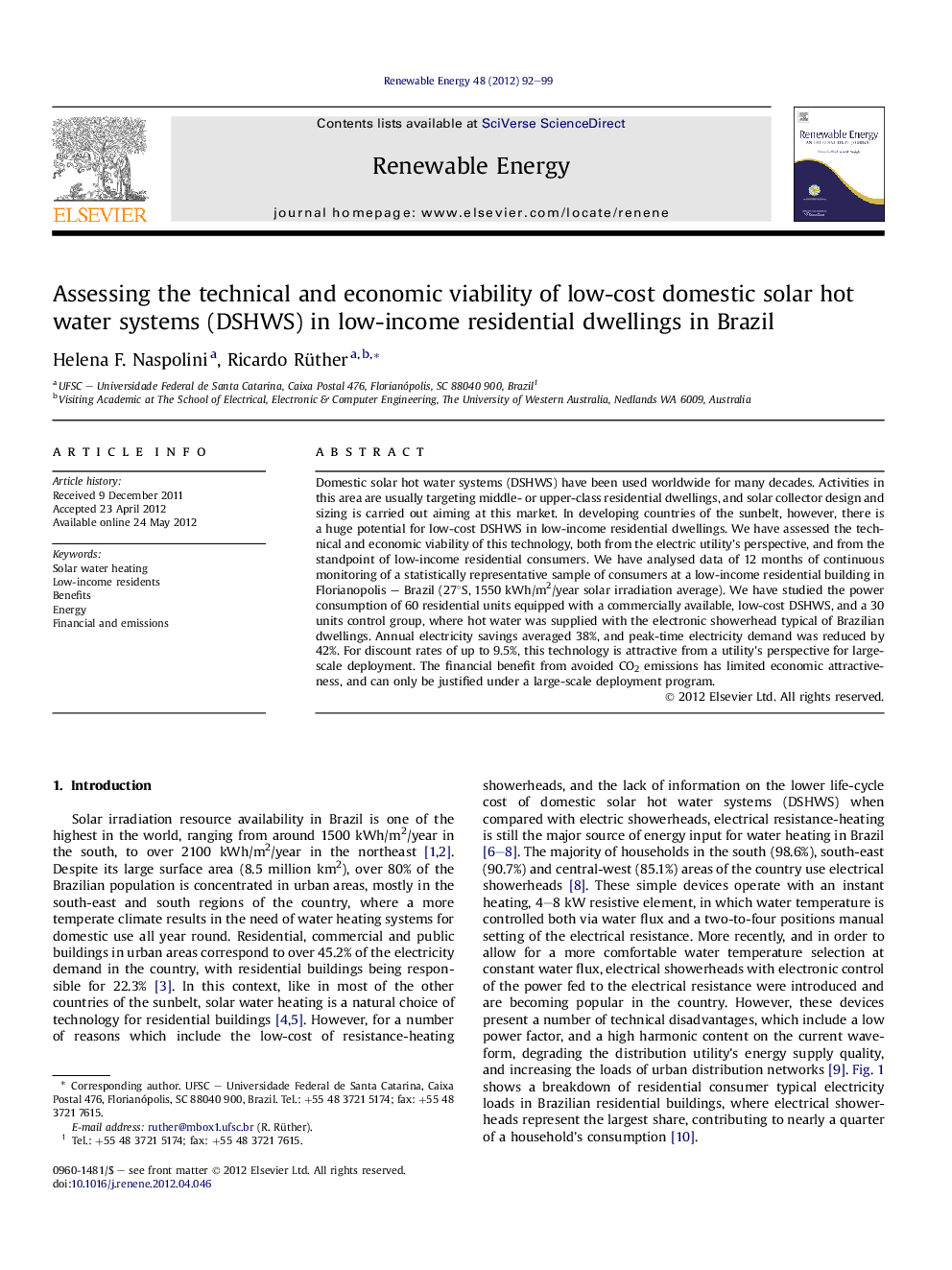| کد مقاله | کد نشریه | سال انتشار | مقاله انگلیسی | نسخه تمام متن |
|---|---|---|---|---|
| 300859 | 512491 | 2012 | 8 صفحه PDF | دانلود رایگان |

Domestic solar hot water systems (DSHWS) have been used worldwide for many decades. Activities in this area are usually targeting middle- or upper-class residential dwellings, and solar collector design and sizing is carried out aiming at this market. In developing countries of the sunbelt, however, there is a huge potential for low-cost DSHWS in low-income residential dwellings. We have assessed the technical and economic viability of this technology, both from the electric utility's perspective, and from the standpoint of low-income residential consumers. We have analysed data of 12 months of continuous monitoring of a statistically representative sample of consumers at a low-income residential building in Florianopolis – Brazil (27°S, 1550 kWh/m2/year solar irradiation average). We have studied the power consumption of 60 residential units equipped with a commercially available, low-cost DSHWS, and a 30 units control group, where hot water was supplied with the electronic showerhead typical of Brazilian dwellings. Annual electricity savings averaged 38%, and peak-time electricity demand was reduced by 42%. For discount rates of up to 9.5%, this technology is attractive from a utility's perspective for large-scale deployment. The financial benefit from avoided CO2 emissions has limited economic attractiveness, and can only be justified under a large-scale deployment program.
► Low-income dwellings in sunbelt countries show huge potential for low-cost DSHWS.
► Benefits of DSHWS are higher for the distribution Utility than for low-income consumers.
► Electricity savings averaged 38%, and peak-time electricity demand was reduced by 42%.
► For discount rates ≤9.5%, large-scale deployment of DSHWS is attractive for Utilities.
► Avoided CO2 has small economic value, and can only be justified in large-scale deployment programs.
Journal: Renewable Energy - Volume 48, December 2012, Pages 92–99